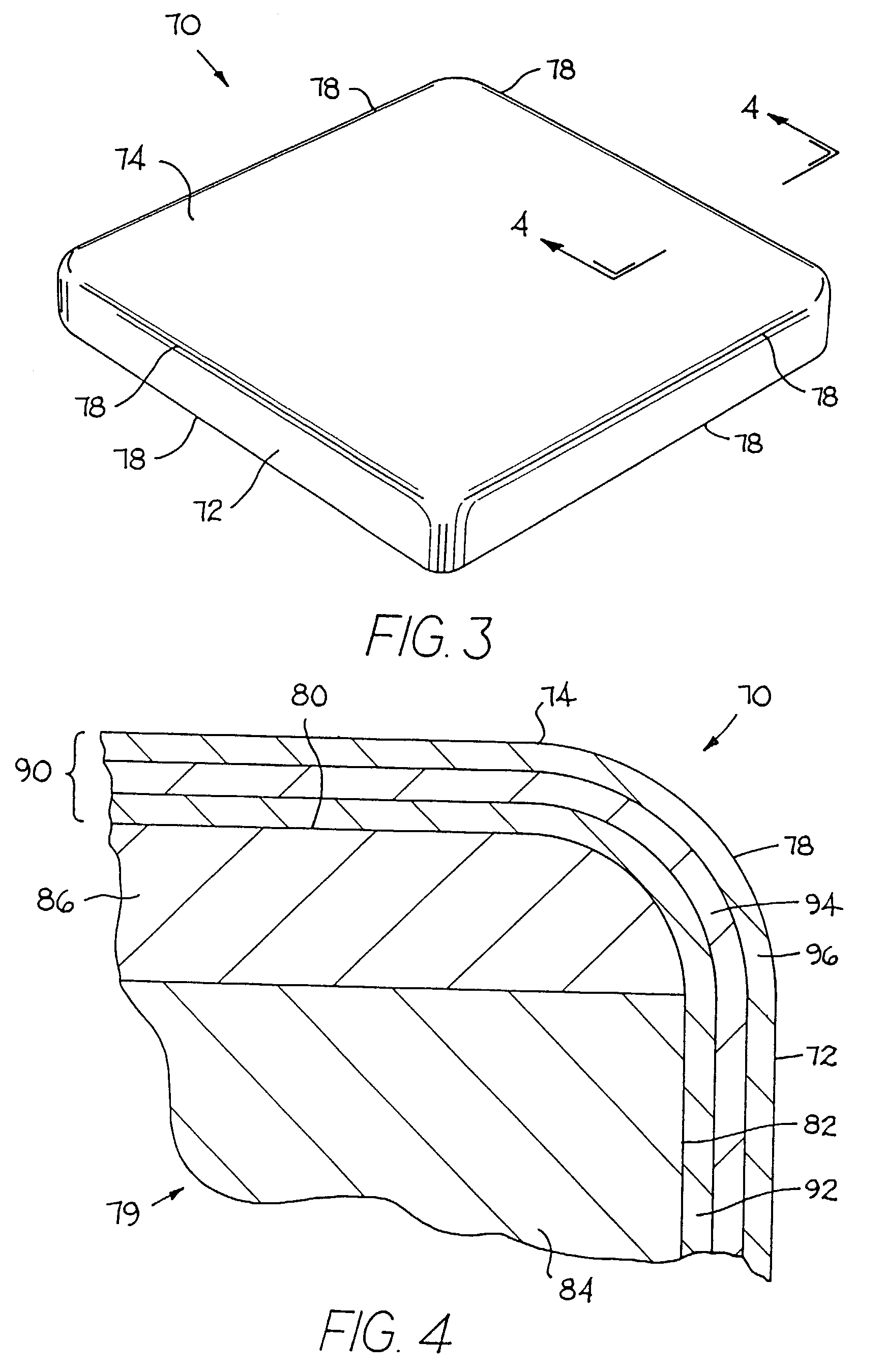Cemented carbide tool and method of making
a cutting tool and cemented carbide technology, applied in the field of cemented carbide cutting tools, can solve the problems of increasing the cost of storing (and/or making) two or more different compositions of starting powder, and achieve the effect of high nitrogen content and high nitrogen conten
- Summary
- Abstract
- Description
- Claims
- Application Information
AI Technical Summary
Benefits of technology
Problems solved by technology
Method used
Image
Examples
example no.1
EXAMPLE NO. 1
[0083]For Example No. 1, the starting powder mixture contained the following components: 6 weight percent cobalt, 2.7 weight percent tantalum, 2.0 weight percent titanium, 0.8 weight percent niobium and the balance of the starting powder mixture was tungsten and carbon wherein the carbon was adjusted to a level of 6.18 weight percent. The starting powder mixture did not contain any nitrogen, except possibly in small trace amounts. These trace amounts were sufficiently small so that the starting powder did not contain any effective amount of nitrogen wherein the nitrogen (even if present) in the starting powder did not assist in any measurable (or perceivable) way in the formation of the zone of binder enrichment.
[0084]Five kilograms (kg) of the powder mixture charge for Inventive Example No. 1 were added to a 7.5 inch inside diameter by 9 inch steel mill jar along with 21 kilograms of 5 / 16 th inch diameter cemented carbide cycloids. Heptane was added to the top of the j...
example no
[0093]A powder mixture of the same composition as Example No. 1 was prepared, pressed and processed in the same way as Example No. 1, except that during the controlled cooling step the nitrogen partial pressure was at 70 torr. An analysis showed that there was a zone of essentially non-stratified binder enrichment beginning at the peripheral surface of the substrate and extending inwardly to a depth of about twenty-nine micrometers. The apparent porosity of the zone of binder enrichment was C00 and of the bulk substrate was C02.
example no.2
EXAMPLE NO. 2
[0094]For Example No. 2, green cutting insert blanks were pressed from the same powder mixture as Example No. 1 into SNG432 style green cutting insert blanks. The processing steps were the same as those used to process Example No. 1, except that the sinter hold step had a duration of about forty-five minutes. The depth of the zone of essentially non-stratified binder enrichment was about twenty-three micrometers and the maximum level of cobalt concentration in the zone of binder enrichment was between about 200 percent and about 250 percent of the cobalt concentration of the bulk substrate. The porosity rating for the zone of binder enrichment was C00 and the bulk substrate was C02.
PUM
| Property | Measurement | Unit |
|---|---|---|
| weight percent | aaaaa | aaaaa |
| weight percent | aaaaa | aaaaa |
| depth | aaaaa | aaaaa |
Abstract
Description
Claims
Application Information
 Login to View More
Login to View More - R&D
- Intellectual Property
- Life Sciences
- Materials
- Tech Scout
- Unparalleled Data Quality
- Higher Quality Content
- 60% Fewer Hallucinations
Browse by: Latest US Patents, China's latest patents, Technical Efficacy Thesaurus, Application Domain, Technology Topic, Popular Technical Reports.
© 2025 PatSnap. All rights reserved.Legal|Privacy policy|Modern Slavery Act Transparency Statement|Sitemap|About US| Contact US: help@patsnap.com



